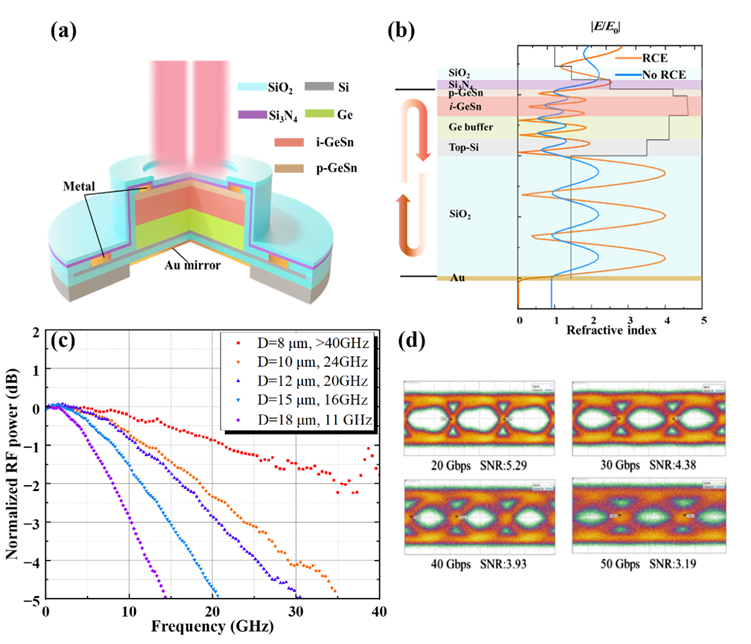With the rapid development of information technology, such as cloud computing, industrial Internet and 5G wireless, the capacity of optical fiber communication network shows an explosive growth trend. At present, the capacity of single core optical fibers is approaching the nonlinear Shannon transmission limit. Like polarization multiplexing and high-order modulation techniques, increasing spectral bandwidth technology is one of the important technical routes to solve the capacity crisis of single core optical fibers. The spectral bandwidth of the 2-micron band is about one order of magnitude higher than that of the traditional telecommunication C-band. This indicates that it is great potential by utilizing spectrum bandwidth technology to achieve ultra large optical communication capacity. In recent years, optoelectronic devices such as amplifiers, modulators, lasers, and detectors operating in the 2-micron wavelength band have received widespread attention from researchers, accelerating the research progress of 2-micron optical communication technology.
Compatible with CMOS technology, Silicon photonics can achieve large-scale manufacture and reduce chip costs. Silicon based germanium detectors have been commercially applied in O and C-band communication. However, due to the direct bandgap of germanium corresponding to the C-band, it is difficult to work efficiently after the C-band. Germanium tin (GeSn) alloy is a group IV semiconductor material. By adjusting the Sn content in the alloy, the optical band gap of GeSn can be extended to the 2 micron band, making it an ideal material for preparing ultra-wideband silicon-based photodetectors. However, the current high-speed 2-micron germanium tin detector urgently needs to solve the problems of low bandwidth and responsiveness. This work uses tin composition gradient relaxation technology to overcome the problems of tin segregation and high defect density in high tin component germanium tin materials growth, and prepares high-quality germanium tin light absorption layers. Moreover, to trade off the 3dB bandwidth and the responsivity of the GeSn PDs, a resonant enhanced detector structure was designed. Finally, the germanium tin detector with responsivity of 0.49A/W and 3dB bandwidth of 40GHz in the 2 μm was developed. For the first time, a 50Gbps NRZ signal eye diagram was achieved in a silicon-based 2-micron wavelength high-speed optical communication link using a developed germanium tin detector. These results verify the potential application of germanium tin detectors in future ultra large capacity optical communication system. Relevant research results were recently published in Photonics Research, Volume 12, No. 4, 2024. [ Jinlai Cui, Jun Zheng, Yupeng Zhu, Xiangquan Liu, Yiyang Wu, Qinxing Huang, Yazhou Yang, Zhipeng Liu, Zhi Liu, Yuhua Zuo, Buwen Cheng. High-speed GeSn resonance cavity enhanced photodetectors for a 50 Gbps Si-based 2 μm band communication system[J]. Photonics Research, 2024, 12(4): 767 ]
Professor Cheng Buwen, one of the authors, believes that the successful development of high-speed germanium tin detectors is of great significance for accelerating the 2-micron wavelength optical communication technology. In the future, the research will focus on high-speed germanium tin waveguide detectors, and by integrating silicon-based active and passive devices on SOI substrates, a high-speed silicon-based optoelectronic integrated chip will be developed that operates in the 2-micron band.

Fig 1. (a) Schematic diagram of RCE resonance enhanced photodetector model. (b) According to the Finite Difference Time Domain (FDTD) method, the normalized electric field intensity |E|/|E0| inside photodetectors with and without RCE structures was simulated. (c) Frequency response curves of detectors with different diameter countertops under -4V bias voltage. (d) Eye diagram of GeSn PDs at different transmission rates.







